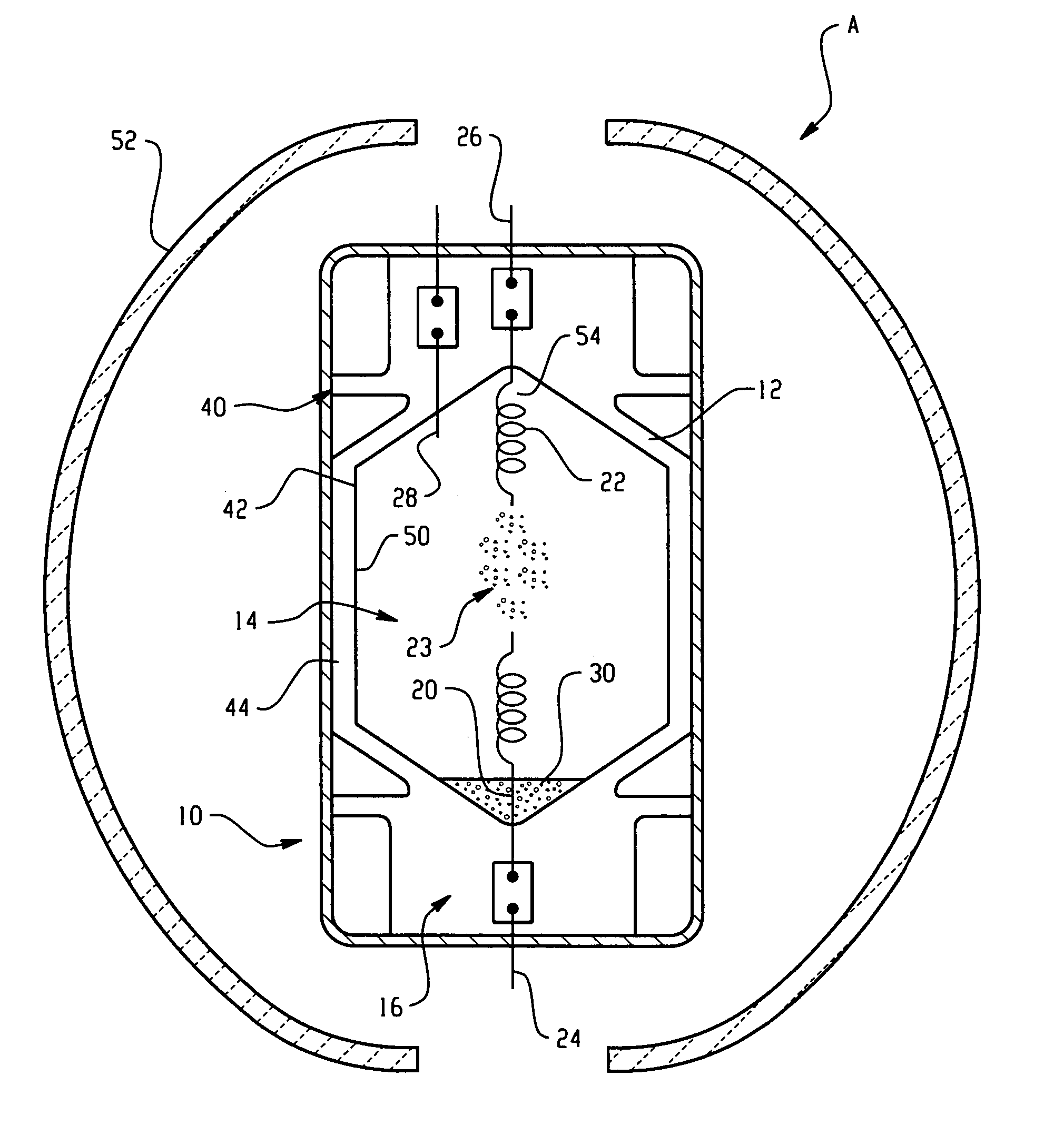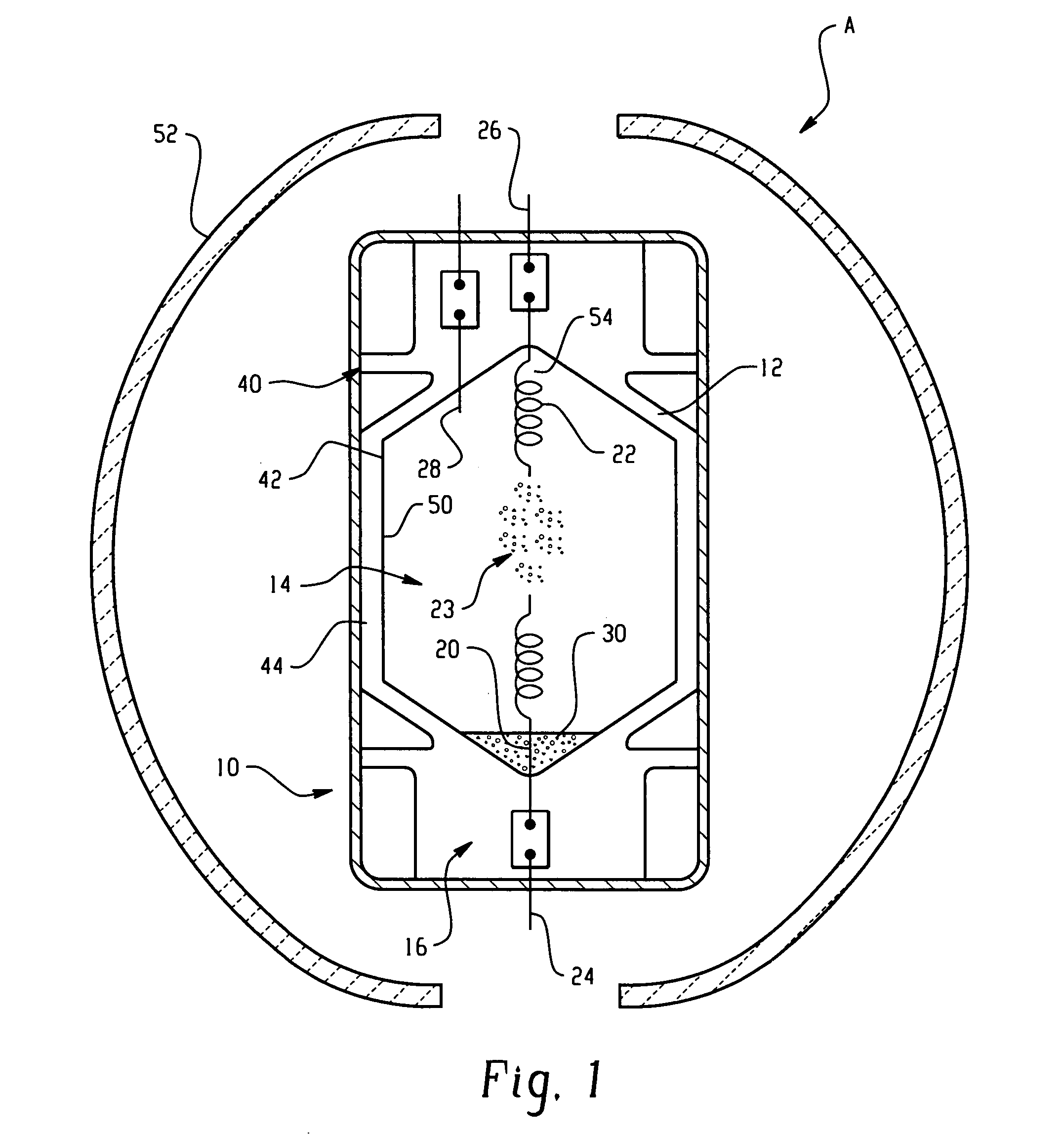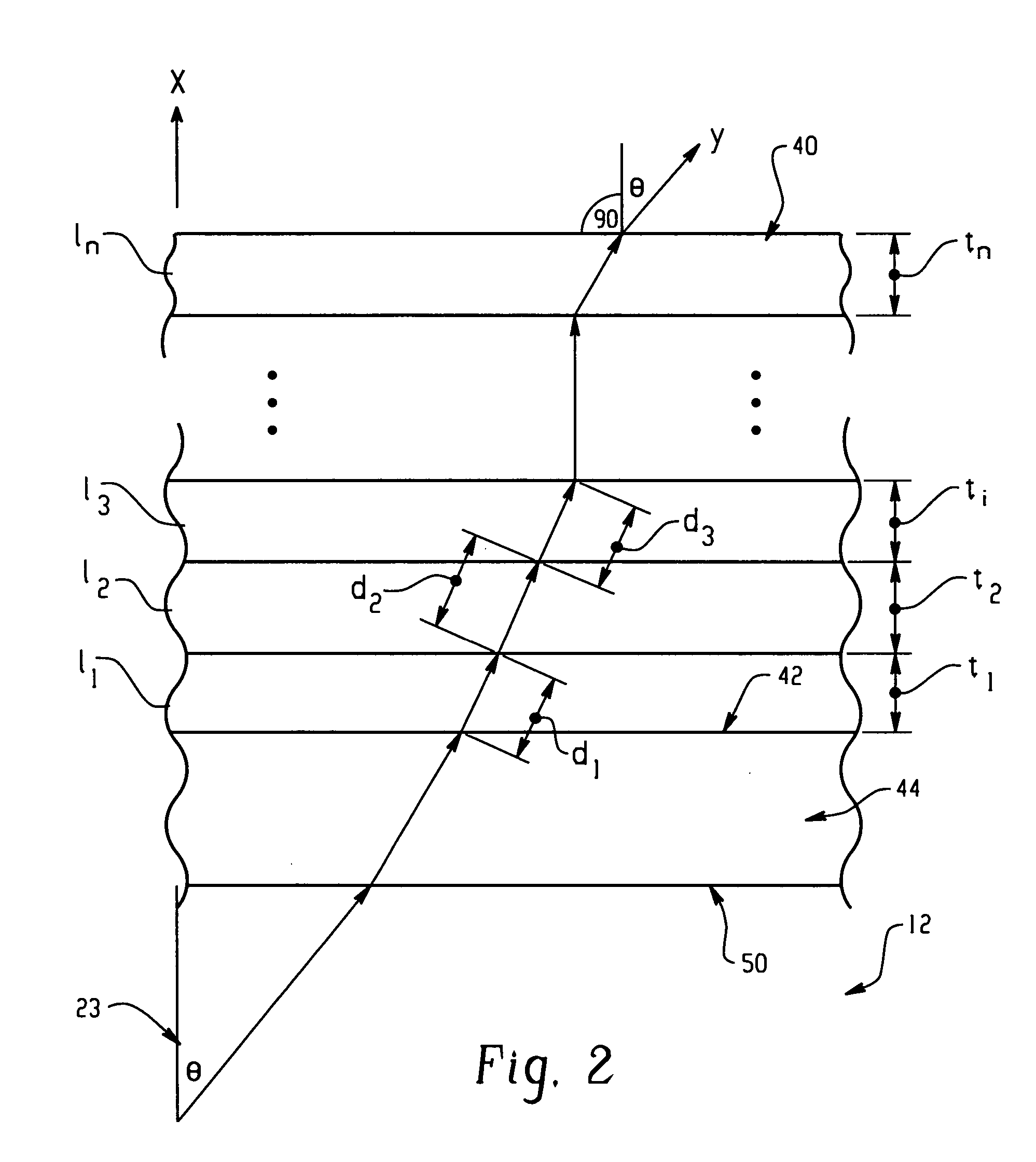Optimized ultraviolet reflecting multi-layer coating for energy efficient lamps
- Summary
- Abstract
- Description
- Claims
- Application Information
AI Technical Summary
Benefits of technology
Problems solved by technology
Method used
Image
Examples
example 1
Off-Normal Optimization of UV Coatings
[0061] Multi-layer coatings optimized for 30 degree angle of incidence α were applied to vertically operated arctubes in HID metal halide lamps (GE's MVR400NBU). The arctubes were formed from undoped quartz and were substantially as shown in FIG. 1. The coatings were formed from alternating layers of Ta2O5 (high index material) and SiO2 (low index material) on a quartz substrate. The actual peak angle θP of the distribution of UV rays was determined with a ray tracing program to be about 26° and skewed toward higher angles, such that 30° is the preferred (mean) optimization angle α. In the case of the MVR400, two thirds of the distribution was found to fall between 0-45°.
[0062] The 30° optimized coating had a 96-98% reflectivity between about 300 and 365 nm and began to reduce around 370 nm.
[0063] TABLE 2 lists the design of the 30° optimized coatings in terms of layer composition and thickness, starting with layer 1 (closest to the arctube ...
example 2
Calculated Improvement in Performance for 30° Optimized Lamps
[0066] The 30 degree optimized, high-reflectivity lamp of Example 1 was compared with other UV-coated lamps. TABLE 3 shows the results of ray tracing calculations of the amount of UV emitted by the arc which is delivered by the coating to the end of the arctube where the metal halide pool is located, as a function of reflectivity and optimization angle. The numbers shown in the table represent the percentage of rays emitted from the arc, in the wavelength range specified, which are ultimately reflected back to the metal halide pool. Thus, for example, in the near UV range (300-400 nm) only 30.8% of the UV rays emitted return to the metal halide pool for a low reflectivity (90%) coated tube optimized at 150 from normal, as compared to 49.9% for an equivalent arctube with a coating which is optimized at the optimization angle α=30° and formed for high reflectivity (averaging 98% in the 300-370 nm range). As can be apprecia...
PUM
 Login to View More
Login to View More Abstract
Description
Claims
Application Information
 Login to View More
Login to View More - R&D
- Intellectual Property
- Life Sciences
- Materials
- Tech Scout
- Unparalleled Data Quality
- Higher Quality Content
- 60% Fewer Hallucinations
Browse by: Latest US Patents, China's latest patents, Technical Efficacy Thesaurus, Application Domain, Technology Topic, Popular Technical Reports.
© 2025 PatSnap. All rights reserved.Legal|Privacy policy|Modern Slavery Act Transparency Statement|Sitemap|About US| Contact US: help@patsnap.com



